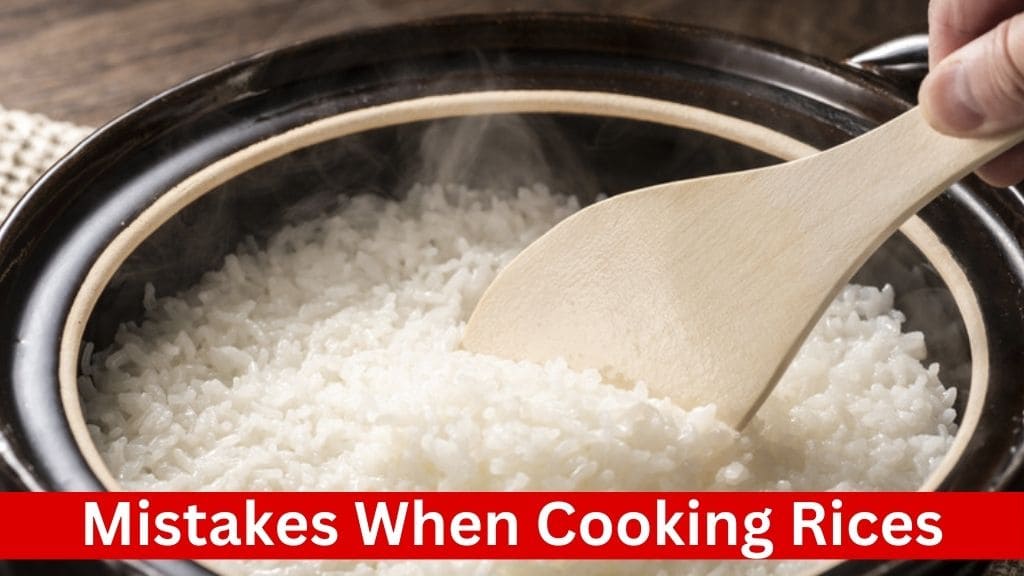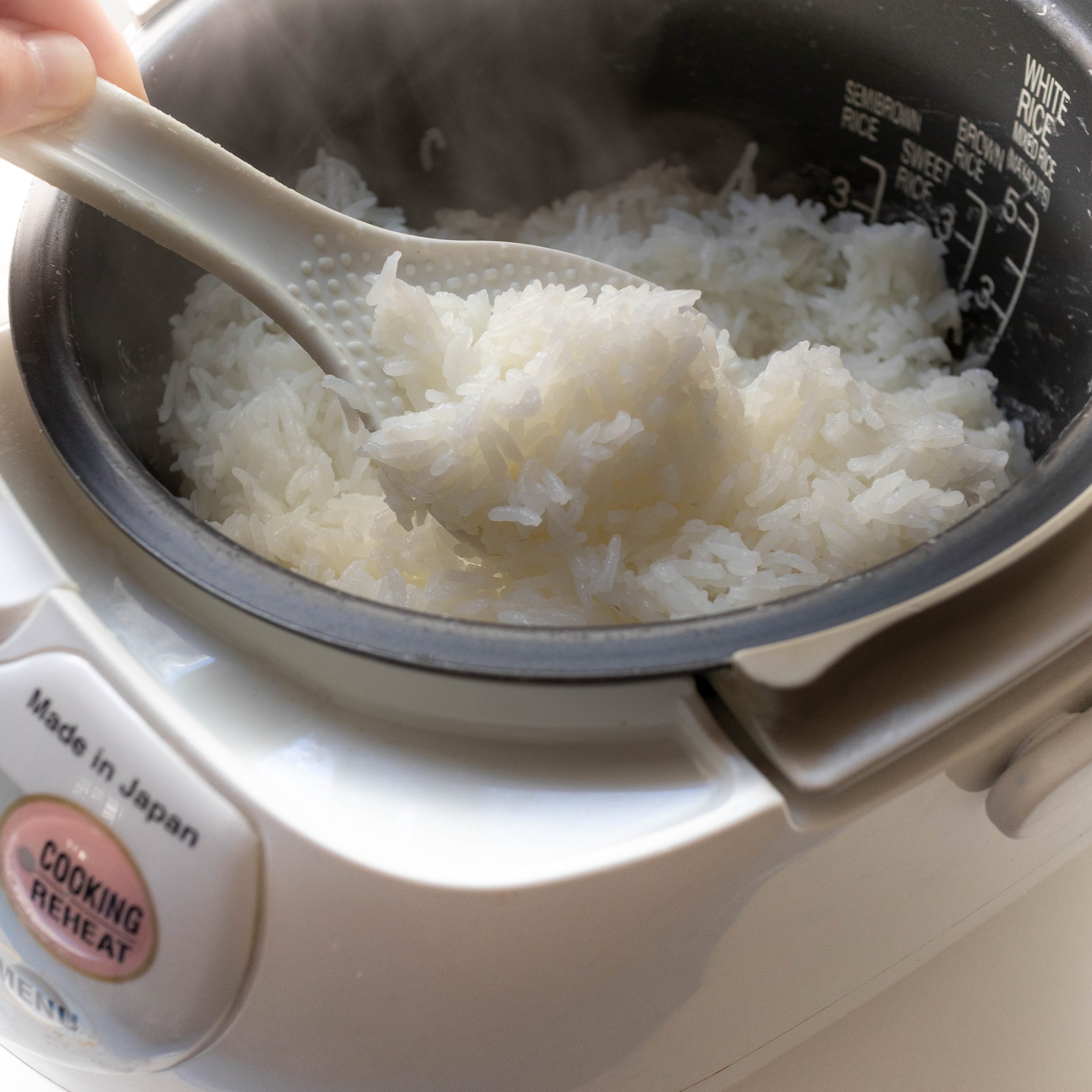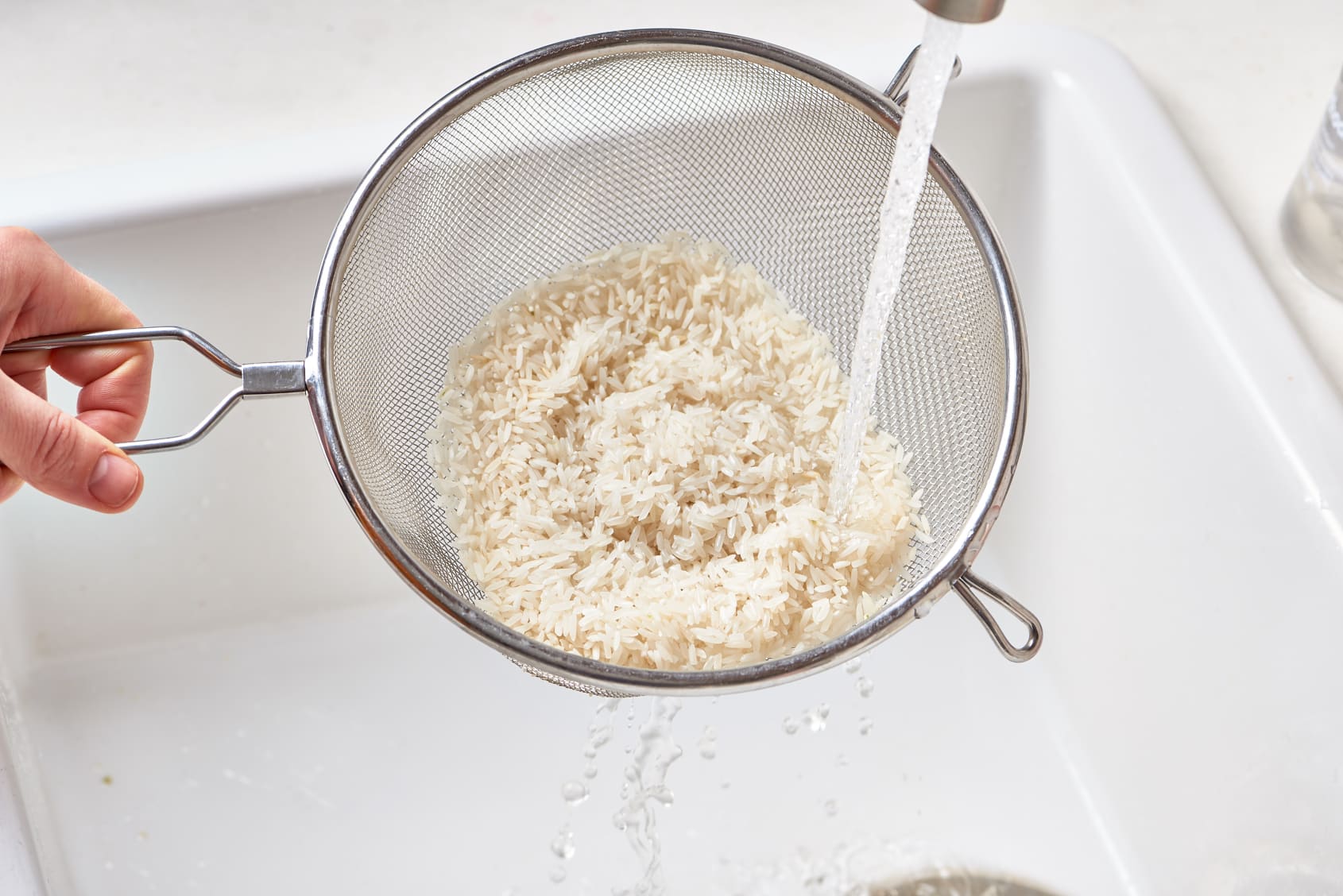Rice is a versatile staple food enjoyed by billions around the globe. From fluffy basmati to hearty brown rice, there’s a variety to suit every palate. However, achieving the perfect pot of rice can sometimes be a challenge, as there are several common mistakes that home cooks often make. In this comprehensive guide, we’ll delve into these mistakes and provide expert tips on how to avoid them, ensuring that your rice dishes turn out perfectly every time.
Before we dive into the mistakes, let’s briefly review the basic steps involved in cooking rice:
- Rinsing: It’s important to rinse the rice thoroughly before cooking to remove excess starch and any impurities.
- Measuring: Use the correct ratio of water to rice for optimal results.
- Cooking: Bring the water to a boil, add the rice, then simmer until tender and fluffy.
- Resting: Allow the cooked rice to rest before serving to ensure even texture and moisture distribution.
Now, let’s explore the most common mistakes made during each of these steps and learn how to avoid them.
Mistake 1: Skipping the Rinse
The Blunder:
Many home cooks overlook the importance of rinsing rice before cooking it. Whether due to time constraints or simply not understanding the purpose, this step is often skipped altogether.
The Consequence:
Skipping the rinse can have several negative consequences for your cooked rice. When rice is harvested and processed, it accumulates excess starch on the surface. If this starch is not removed through rinsing, it can cause the grains to stick together during cooking, resulting in a gummy texture. Additionally, rice may contain impurities such as dust, debris, or even remnants of pesticides or fertilizers used in farming. Rinsing helps to remove these impurities, ensuring that your rice is clean and safe to eat.
The Fix:
To avoid the pitfalls of skipping the rinse, it’s essential to take the time to properly rinse your rice before cooking. Here’s how to do it:
- Measure the Rice: Start by measuring the amount of rice you need for your recipe. It’s important to measure the rice before rinsing, as rinsing will remove some of the excess starch and could affect the final volume of the grains.
- Rinse Thoroughly: Place the measured rice in a fine-mesh sieve or colander and rinse it under cold, running water. Use your fingers to agitate the rice gently, ensuring that all the grains are thoroughly rinsed. Continue rinsing until the water runs clear, indicating that most of the excess starch and impurities have been removed.
- Strain the Rice: Once the rice is thoroughly rinsed, shake off any excess water and strain it well to remove as much moisture as possible. Excess water left on the rice grains can affect the cooking process, so it’s important to strain them well before adding them to the pot.
Mistake 2: Incorrect Water-to-Rice Ratio
:max_bytes(150000):strip_icc()/how-to-make-jasmine-rice-3217510-step-03-5bd8c94746e0fb00510fae89.jpg)
The Blunder:
One of the most common mistakes when cooking rice is guessing or not following the recommended water-to-rice ratio. Many home cooks eyeball the measurements or simply add water until it looks right, without considering the consequences of an incorrect ratio.
The Consequence:
The water-to-rice ratio is crucial for achieving perfectly cooked rice. Using too much water can result in overcooked, mushy rice, while too little water can leave you with undercooked, crunchy grains. In both cases, the texture and taste of the rice will be compromised, leading to a less-than-ideal dish.
The Fix:
To avoid the pitfalls of an incorrect water-to-rice ratio, it’s important to measure the water and rice accurately. Here are some tips to help you get it right:
- Follow the Packaging: Most packages of rice will provide instructions for the water-to-rice ratio. These instructions are based on the type and variety of rice being used, so it’s a good idea to follow them closely.
- Use the “Finger Trick”: If you don’t have access to the packaging or prefer a more hands-on approach, you can use the “Finger Trick” to gauge the water level accurately. Simply pour the rinsed rice into a heavy-bottomed pot, ensuring that it’s level. Then, touch your middle finger to the surface of the rice and add enough water to reach the first knuckle of your finger. This technique is a foolproof way to ensure the correct water-to-rice ratio, regardless of the size of your hand.
- Adjust as Needed: Keep in mind that the water-to-rice ratio may need to be adjusted based on factors such as altitude, humidity, and the type of pot being used. If you find that your rice is consistently turning out too dry or too mushy, experiment with small adjustments to the water-to-rice ratio until you find the perfect balance.
Mistake 3: Cooking on High Heat
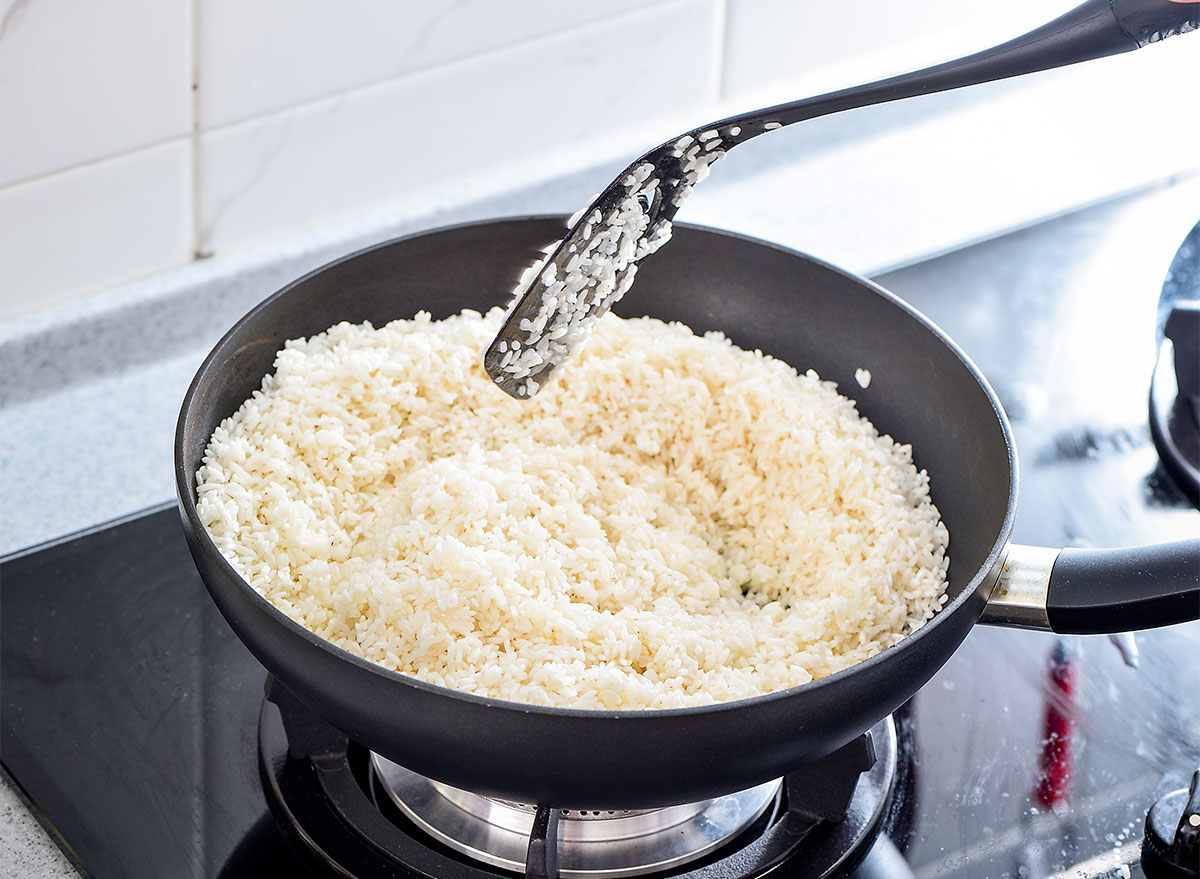
The Blunder:
Some home cooks mistakenly believe that cooking rice on high heat will speed up the cooking process. They may crank up the heat to get the water boiling quickly, thinking it will save time.
The Consequence:
Cooking rice on high heat can have detrimental effects on the final outcome. When the water boils too rapidly, it evaporates quickly, leaving insufficient liquid to properly cook the rice. As a result, the rice may be undercooked, with hard or crunchy grains, or it may burn on the bottom of the pot, imparting a charred flavor to the dish.
The Fix:
To avoid the pitfalls of cooking rice on high heat, it’s important to follow a gentle cooking process that allows for even absorption of water and thorough cooking of the grains. Here’s how to do it:
- Bring to a Boil, Then Simmer: Start by bringing the water to a boil over medium-high heat. Once it reaches a rolling boil, immediately reduce the heat to low or medium-low to maintain a gentle simmer.
- Cover the Pot: Covering the pot with a lid helps to trap steam, which is essential for cooking the rice evenly. The lid also prevents excessive evaporation of water, ensuring that there’s enough liquid to fully hydrate the rice.
- Monitor the Cooking: Keep an eye on the rice as it cooks, and adjust the heat as needed to maintain a steady simmer. If the water evaporates too quickly, add a little more hot water to the pot to prevent the rice from drying out.
Mistake 4: Treating Brown Rice Like White Rice
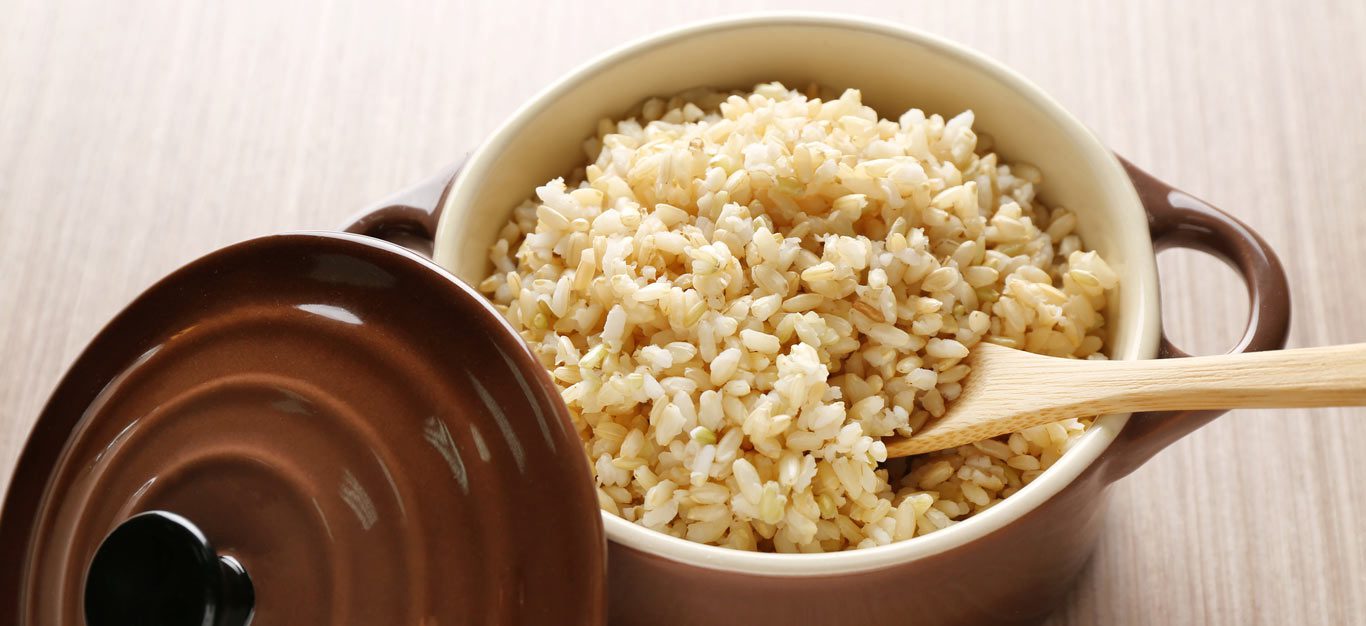
The Blunder:
Many home cooks make the mistake of treating brown rice the same way they would white rice. They may use the same cooking method, water-to-rice ratio, and cooking time without realizing that brown rice requires different handling due to its unique composition.
The Consequence:
Brown rice contains a layer of bran that white rice lacks. This bran layer contains fiber and nutrients but also acts as a barrier, slowing down the absorption of water into the rice grains. As a result, brown rice requires more water and a longer cooking time compared to white rice. Treating brown rice like white rice can lead to undercooked grains that are tough or chewy, as well as unevenly cooked rice with some grains softer than others.
The Fix:
To avoid the pitfalls of treating brown rice like white rice, it’s important to adjust your cooking method to accommodate its longer cooking time and higher water absorption. Here’s how to do it:
- Use More Water: Brown rice requires more water than white rice to fully hydrate and cook properly. A general guideline is to use 1.5 to 2 times as much water as rice. For example, if you’re cooking 1 cup of brown rice, use 1.5 to 2 cups of water.
- Extend the Cooking Time: Brown rice takes longer to cook than white rice due to its bran layer. While white rice may cook in 15-20 minutes, brown rice typically requires 45-50 minutes or longer. Be patient and allow the rice to simmer gently until tender, checking occasionally to ensure it doesn’t run out of water.
- Consider Parboiling: If you’re short on time, you can partially cook brown rice by parboiling it before adding it to your dish. Parboiling reduces the cooking time while still allowing the rice to retain its nutty flavor and chewy texture.
Mistake 5: Stirring Rice While Cooking

The Blunder:
Many home cooks have the habit of stirring rice constantly while it’s cooking, believing that it will help prevent the grains from sticking together or burning. However, this can actually have the opposite effect and lead to undesirable results.
The Consequence:
Stirring rice while it’s cooking can cause the grains to break apart, resulting in a gummy or sticky texture. When rice is stirred excessively, the outer layers of the grains can break off, releasing excess starch into the cooking liquid. This can cause the rice to become overly sticky and clumpy, rather than light and fluffy.
The Fix:
To avoid the pitfalls of stirring rice while cooking, it’s important to adopt a hands-off approach and allow the rice to cook undisturbed. Here’s why:
- Preserves Grain Integrity: Allowing the rice to cook without stirring helps to preserve the integrity of the individual grains. When left undisturbed, the grains have the opportunity to absorb the liquid evenly and cook uniformly, resulting in a more consistent texture.
- Promotes Even Cooking: Stirring rice can disrupt the formation of steam channels, which are essential for even cooking. These steam channels allow the rice to cook from the inside out, ensuring that each grain is fully cooked and tender.
- Prevents Clumping: By refraining from stirring, you can avoid breaking the grains and releasing excess starch into the cooking liquid. This helps to prevent the rice from becoming overly sticky or clumpy, resulting in a lighter, fluffier texture.
If you need to check on the progress of the rice, use a fork to gently push aside a small portion of the grains to see if there’s any liquid remaining at the bottom of the pot. Avoid stirring unless absolutely necessary, such as when making risotto, where stirring is essential for releasing starches and creating a creamy texture.
Mistake 6: Not Letting Rice Rest After Cooking
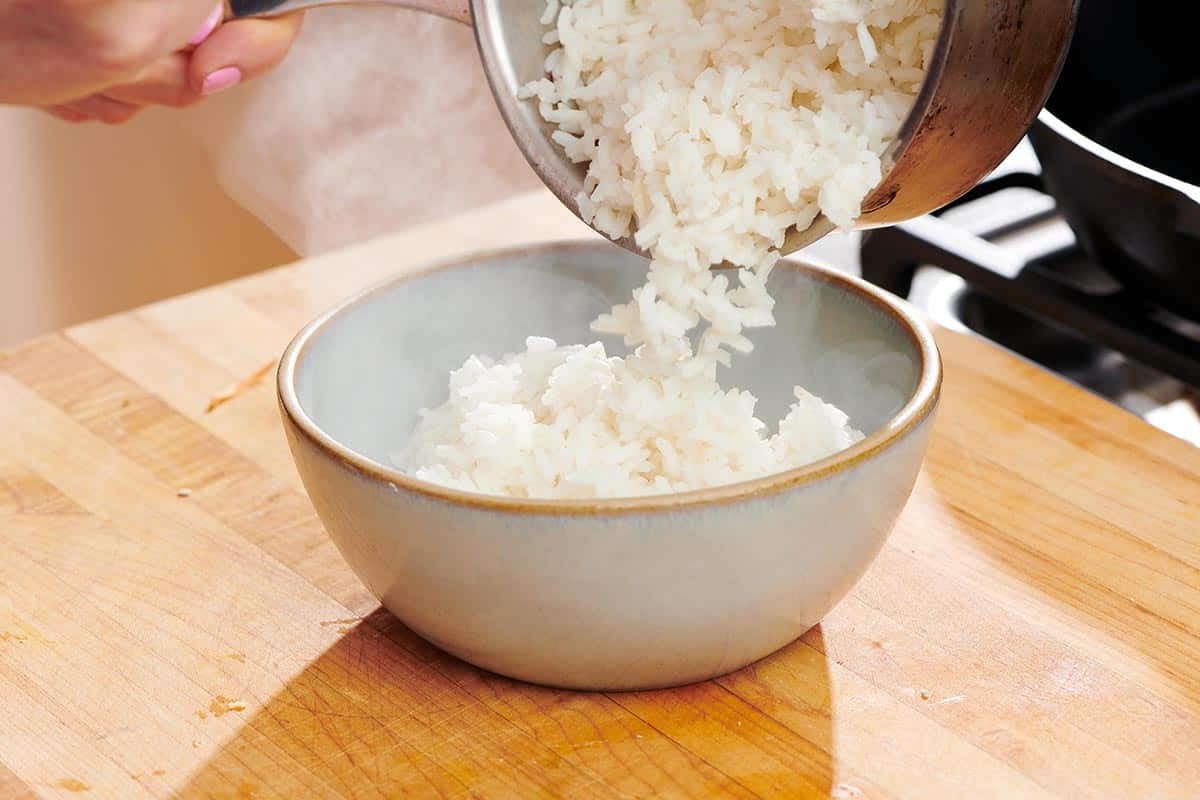
The Blunder:
After rice has finished cooking, many home cooks make the mistake of serving it immediately without allowing it to rest for a few minutes. This oversight can have a significant impact on the final texture and moisture distribution of the rice.
The Consequence:
Failing to let rice rest after cooking can result in a less-than-ideal texture and moisture distribution. When rice is served immediately, the steam trapped inside the pot continues to evaporate, leading to uneven moisture levels within the grains. This can result in some portions of the rice being overly moist and sticky, while others may be dry and undercooked. Additionally, serving rice immediately after cooking can cause it to be more compact and dense, rather than light and fluffy.
The Fix:
To avoid the pitfalls of not letting rice rest after cooking, it’s important to allow it to sit for a few minutes before serving. Here’s why:
- Even Moisture Distribution: Allowing rice to rest after cooking gives it time to absorb any remaining steam and moisture evenly. This helps to ensure that each grain of rice is evenly hydrated and tender, with a consistent texture throughout.
- Fluffier Texture: Giving rice time to rest allows the grains to separate naturally, resulting in a lighter, fluffier texture. This makes the rice more pleasant to eat and enhances its overall mouthfeel.
- Improved Flavor: Allowing rice to rest after cooking allows its flavors to develop and meld together, resulting in a more cohesive and delicious dish. This brief resting period can enhance the overall flavor profile of the rice and make it more enjoyable to eat.
To properly let rice rest after cooking, simply remove the pot from the heat and leave it covered for 5-10 minutes. This allows the rice to continue steaming gently and absorbing any excess moisture. After the resting period, use a fork to gently fluff the rice, separating the grains and ensuring a light, airy texture.
Conclusion
Cooking rice may seem simple, but avoiding common mistakes can make a significant difference in the final outcome. By following these tips and techniques, you can ensure that your rice dishes turn out perfectly fluffy and flavorful every time. Remember to rinse the rice, measure accurately, cook on gentle heat, treat brown rice differently, avoid stirring unnecessarily, and let the rice rest before serving. With a little attention to detail, you’ll become a master of rice cooking in no time!

